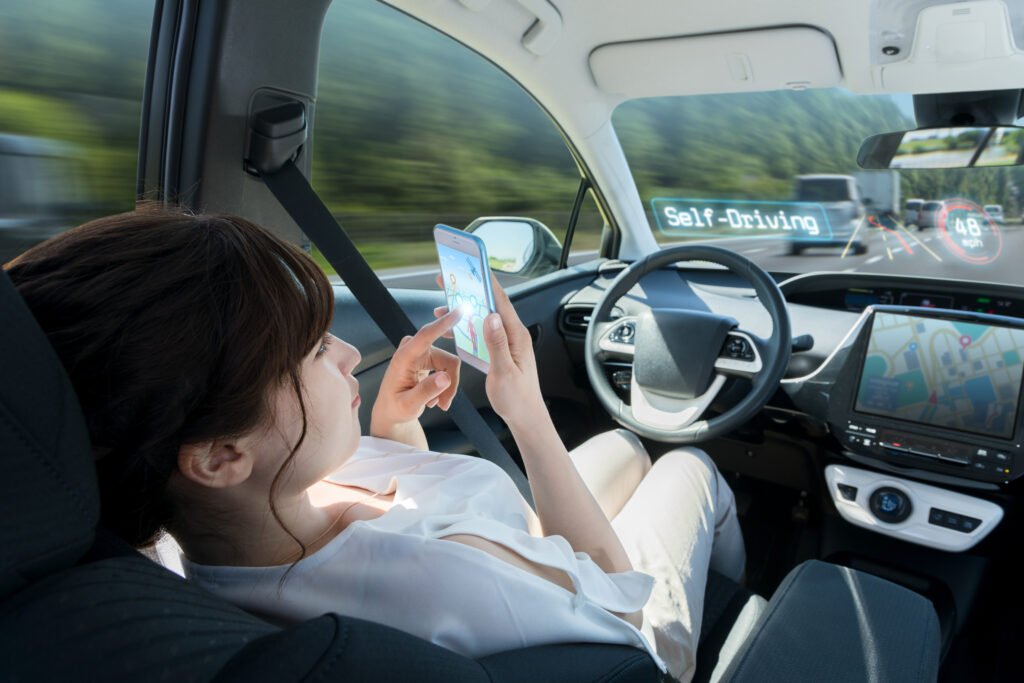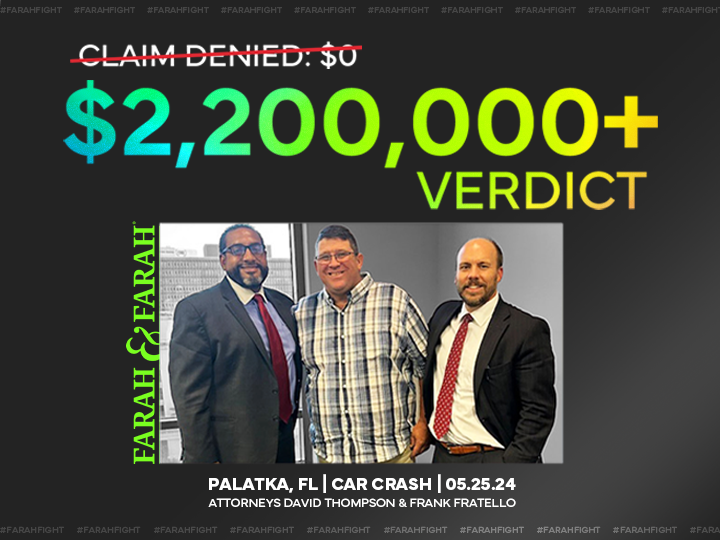In the rapidly evolving transportation landscape, self-driving cars emerge as both a marvel of modern technology and a source of significant legal and ethical considerations. While the potential of autonomous vehicles to revolutionize our roads is undeniable, the complex interplay of liability, legislation, and cybersecurity presents an array of challenges for society, particularly for those directly impacted by self-driving car incidents. This blog post delves into the current state of autonomous vehicle technology, the legal implications of self-driving car accidents, and the legislative framework shaping the future of our roads.
Are Self-Driving Cars the Future?
Self-driving cars, also known as autonomous vehicles, with the promise of reducing human error and making our roads safer, seem like the future of transportation. However, as we stand on the cusp of this technological revolution, it’s crucial to understand the complexities of making fully autonomous vehicles a common sight on our streets.
Benefits of Self-Driving Vehicles
The primary motivations for embracing self-driving cars include:
- Improving safety by removing human error
- Reducing carbon emissions
- Easing traffic congestion with options for shared rides
States Preparing for Autonomous Cars
To adapt to the evolving technology landscape in the automobile sector, there’s been a significant uptick in state legislation aimed at facilitating the testing of autonomous vehicles. This surge in legislative activity has spurred an increase in state executive orders that authorize the use of these vehicles. As it stands, 29 states have passed laws to some extent allowing the operation of autonomous vehicles. While 21 states have yet to enact specific legislation regarding these vehicles, they also haven’t prohibited their use within their borders.
Evolution of Fully Autonomous Vehicles
The development of self-driving cars has been a gradual process, moving through various levels of autonomy, from vehicles requiring full human oversight to those capable of operating without any human intervention. Despite significant advancements, achieving a fleet of fully autonomous cars requires overcoming substantial technological, ethical, and legislative hurdles. The distinctions in control levels between human and artificial intelligence operations are further detailed in the following classifications.
No Automated Driving
This situation is characterized by a scenario where driving is entirely manual, meaning that every aspect of vehicle operation, including acceleration, braking, and steering, is under direct human control. In this context, all of the safety maneuvers, such as maintaining a safe following distance, observing speed limits, and executing safe lane changes, are performed by the human driver without any assistance from automated systems or technology.
Driver Assistance
This concept encompasses the potential for incorporating technological oversight within the vehicle, directly managed by the human operator. Specifically, innovations such as lane-keeping assistance and adaptive cruise control are prime examples of technologies that, while being optional features, still require the driver to remain alert and attentive. These systems are designed to enhance road safety and driving comfort by assisting with some driving tasks, yet they underscore the importance of the driver’s role in monitoring and responding to road conditions and the vehicle’s performance.
Partially Automated Driving
This specific level of autonomous driving technology necessitates that the human driver stays vigilant and ready to intervene if necessary, but it also permits certain vehicle functions to take control autonomously under appropriate conditions. Once activated, the sophisticated systems responsible for managing critical vehicle operations such as braking, steering, and acceleration can function independently. This means they can operate without any physical input from the driver, making the driving experience smoother and potentially safer in specific scenarios. This technology represents a significant step forward in integrating autonomous systems in everyday vehicles, providing a glimpse into the future of driving.
Conditionally Automated Driving
This level of automation is defined by the vehicle’s system’s ability to completely handle all aspects of driving tasks, from navigating through traffic to adjusting speed according to road conditions. Despite this advanced capability, the driver must remain seated behind the wheel, staying alert and ready to take control of the vehicle if the situation demands it. This ensures that even though the car can operate independently, human intervention can be swiftly applied in scenarios where the automated systems might not perform as expected.
Highly Automated Driving
At this stage in its development, the system is equipped with advanced features that allow it to automatically intervene when it detects malfunctions or deviations from normal operations. While this automation is in progress, the driver must remain in the vehicle, monitoring the system’s performance closely. Importantly, the driver retains the crucial ability to regain manual control of the vehicle at any moment, should the need arise or the situation warrant a more human touch. This balance ensures safety while leveraging technology for enhanced performance.
Fully Automated Driving
These advanced systems are designed to function autonomously, completely removing human or emergency intervention requirements. As a result of this independence, these vehicles are engineered without traditional components such as brakes or steering wheels. This design choice reflects that there’s no need for a human to occupy the driver’s seat, shifting the vehicle design paradigm towards a future where cars are fully self-reliant and capable of navigating without human input. This innovative approach not only signifies a significant leap forward in automotive technology but also poses interesting questions about the future of transportation.
How Do Self-Driving Cars Navigate?
Autonomous vehicles (AV) operate using sophisticated algorithms that integrate sensors, software, and crash avoidance technologies to navigate efficiently and effectively. These systems aim to mitigate the risk of human error, the leading cause of car accidents today. However, the challenge lies in the unpredictability of real-world situations that cannot always be anticipated. This presents significant hurdles in ensuring self-driving cars can reliably respond to scenarios not explicitly programmed into their systems.
Self-Driving Car Accidents
Accidents have occurred despite the advancements in self-driving technology, leading to significant legal battles. The crux of these lawsuits often centers on liability. Is it the manufacturer, the software developer, or the human occupant (if any) who is at fault?
Causes of Self-Driving Car Accidents
Most car accidents involving self-automated vehicles stem from the unpredictability of real-world situations coupled with human error. For instance, a fatal crash occurred when a Tesla collided with a tractor-trailer because the driver ignored the vehicle’s alerts to resume manual control, and the car’s sensors failed to detect the tractor due to sunlight reflecting off its white surface.
Similarly, an Uber self-driving car fatally hit a pedestrian who was not using a crosswalk, with the vehicle’s sensors failing to recognize the person amid the shadows.
Determining Liability in a Self-Driving Car Accident
These incidents underscore the complexities of assigning initial liability in accidents involving autonomous vehicles and highlight the challenges of navigating the unforeseen and often nuanced circumstances that arise on public roads.
Understanding Who Is at Fault in a Self-Driving Car Accident
Determining who is at fault, or liable, in self-driving car accidents is complex, as traditional concepts of driver responsibility become blurred. The legal landscape is still adapting to these challenges, with several factors, including the level of the vehicle’s autonomy and the operability of manual controls, playing a role in liability determinations.
As vehicles increasingly rely on technological advancements like lane assistance and backup cameras, a significant question arises regarding liability, especially when no one is physically in the driver’s seat. The issue of responsibility can extend to various entities, including:
- Vehicle manufacturers
- Manufacturers of autonomous vehicle (AV) components and software
- Distributors of autonomous vehicles
- Insurance providers
- Local government entities
- Vehicle owners who neglect security updates
Even in scenarios where a vehicle owner’s direct involvement in an incident is nonexistent, they cannot entirely evade liability due to the inherent responsibility of maintaining the vehicle.
Liability in Rideshare Car Accidents Involving a Self-Driving Car
The complexity escalates in the case of self-driving rideshare accidents, where multiple parties could be liable based on specific circumstances. The delineation of responsibility in such instances underscores the evolving challenge of integrating autonomous vehicles into our daily lives while ensuring safety and accountability.
Current Autonomous Vehicle Legislation
Legislation governing self-driving cars is still nascent but is evolving as these vehicles become more prevalent. Laws vary significantly by jurisdiction, with some areas adopting more open policies to encourage testing and development while others proceed with caution due to safety and liability concerns.
The topic of liability plays a crucial role in policy-making and legislative creation. As the concept of vehicles without human drivers emerges as a new reality, the language used in policies remains inherently vague due to the novelty of the knowledge.
Testing Self-Driving Vehicles
Recent legislative developments focus on federal regulations that automobile companies must comply with before self-driving cars are authorized for use on public roads. Additionally, there is considerable variation at the state level, as illustrated by the differing regulations in the two states where Farah and Farah operate.
Specific states, like Florida and Georgia, have positioned themselves as favorable locations for testing autonomous vehicles. Each has a unique set of regulations designed to balance innovation with public safety.
Autonomous Vehicle Legislation in Florida
In 2019, legislation was enacted to permit the testing of autonomous vehicles. By 2021, further legislation was approved, allowing self-driving cars to operate on public roads with speed limits of 45 mph or lower, provided they did not exceed this speed limit. At this time, Florida’s legislation is among the most permissive. It allows self-driving cars on public roads without a human driver present, provided certain insurance and reporting requirements are met.
Autonomous Vehicle Legislation in Georgia
Georgia similarly supports the testing of autonomous vehicles but mandates a human operator in the vehicle under specific circumstances and requires adherence to all existing traffic laws and regulations. In 2017, legislation was enacted permitting the operation of autonomous vehicles, both with and without a human driver on board. By 2021, an initiative was launched to bolster and preserve the state’s leading position in the development of the electric mobility sector.
Cybersecurity & Hacking Legislation
Another critical challenge facing self-driving cars is cybersecurity. These vehicles’ reliance on interconnected systems introduces the potential for hacking, posing a significant risk to passenger safety and privacy. As the trend toward self-driving cars gains momentum, considerable worry emerges regarding their vulnerability to cyber attacks by individual hackers who might gain complete control over these vehicles.
Moreover, there’s a heightened fear that terrorist organizations could exploit this technology to orchestrate devastating highway accidents, potentially impacting hundreds or thousands of lives. In response to these pressing concerns, legislation has been enacted requiring manufacturers to implement specific safeguards against cyber threats, ensuring the security of these vehicles.
Were You Involved in a Self-Driving Car Accident?
Navigating the aftermath of a self-driving car accident can be daunting for the individuals involved. Legal representation specialized in autonomous vehicle law can provide crucial guidance and support in addressing the complex web of liability and compensation. If you or someone you know has been affected by a self-driving car incident, understanding your rights and options is paramount. With the landscape of self-driving car legality and liability still taking shape, seeking experienced legal advice is essential.
At Farah and Farah, our attorneys are experienced in personal injury cases involving car accidents and possess the depth of knowledge required to adeptly navigate the complexities of evolving litigation, ensuring those affected by self-driving vehicle incidents receive the critical support they need. Contact us today for a free consultation













